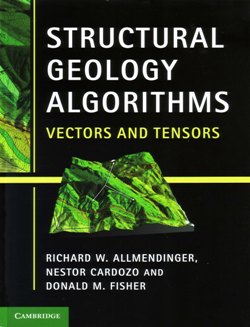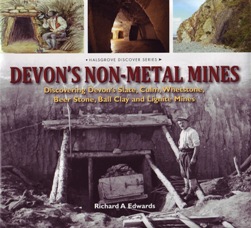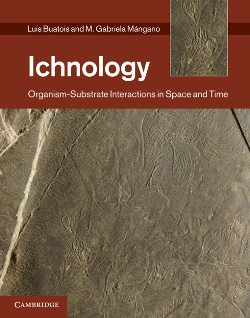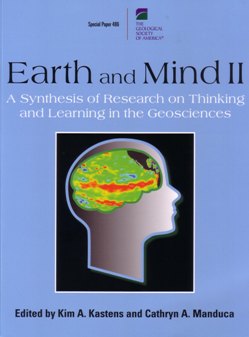 Life & Death - Pompeii & Herculaneum
Life & Death - Pompeii & Herculaneum
With some 450 objects on display, ranging from carbonised figs to room sized frescoes, the new British Museum exhibition Life and Death in Pompeii and Herculaneum is a spectacular and content-rich display of Roman domestic life as preserved in the ruins of these two small cities. They developed in the shadow of Vesuvius and had grown wealthy on agriculture boosted by the rich volcanic soils and trade promoted by their southerly coastal position before being destroyed by the famous eruption of August 24-25th, AD 79.
The exhibits are discussed in detail in the accompanying book with the same title, written by Paul Roberts, who curated the exhibition.
Geologically, this catastrophic event is of considerable interest, partly because of the volcanic processes, which destroyed them, and partly for what those processes and their volcanic products preserved. A surprising amount of the cities’ fabric is preserved along with the ‘fossilized’ traces of some of their inhabitants and their way of life. Historically, the eruption has attracted the particular attention of volcanologists because it is one of the oldest volcanic eruptions to be described in any detail, thanks to the presence of Pliny the Younger and his eyewitness account. He paid particular attention to the event because it killed his uncle, the eminent Roman writer and an admiral of the fleet, Pliny the Elder. Pliny’s account is often quoted as one of the earliest accurate descriptions of a ‘Plinean’ style eruption with pyroclastic surges (see for instance Sigurdsson, 1999).
According to Sigurdsson, warning signs date back to A.D. 62 when a large earthquake damaged buildings in Pompeii and Herculaneum, an event depicted on a marble wall plaque in the exhibition. The earthquake and associated pre-eruption phenomena were recorded by Seneca in Book VI of his Naturales Questiones (A.D. 65). The final stages of restoration were still in progress over a decade later when the eruption occurred. A number of earthquake shocks were felt in mid August AD 79 and by August 20th they had increased in strength, thunder-like noises were heard, springs ceased to flow and wells dried up. Pliny the Younger records that in the early afternoon of the 24th an unusually large ‘cloud’, shaped like an umbrella-pine arose to a great height from Vesuvius. Ash, pumice and rock fragments began to fall from the sky and were carried over Pompeii by strong winds and blocked the streets to a depth of 2 m by midnight.
In recent decades, investigations prompted by volcanologists such as Haraldur Sigurdsson and Steven Sparks have brought Pliny’s account uptodate and most importantly have shown the role of pyroclastic activity in both the destruction and preservation of the remains. Herculaneum had not suffered any fall-out at this stage but a change in eruptive style brought a series of pyroclastic flows surging down the volcano’s slopes to overwhelm both cities and their remaining inhabitants. The only good news was that Herculaneum was buried by some 23 m of volcanic products and Pompeii under a 4m thick blanket of pumice, which protected the remains until the 18th Century.
Needless to say, the current exhibition at London's British Museum is not aimed at geologists but portrays the Roman home and its occupants in as much detail as the famous eruption, successive pyroclastic flows, centuries of looting and WW II allied bombing in November 1943 have allowed. What is really so surprising, is the amount of stuff that has survived, which should encourage palaeontologists to continue searching for more ancient 'Pompeii' style burial sites. As palaeobotanists know the burning of woody tissues under the right conditions can produce amazing charcoal 'fossils' that preserve astonishing detail. From these ancient Roman sites, some of the most remarkable and fragile finds on view in the British Museum are carbonised, such as plant foods – figs, olives, onions, walnuts, peas etc along with loaves of bread and pieces of wooden furniture including small tables, a bench, linen chest and a child’s cradle.
By comparison the animals and humans whose remains are preserved at Pompeii were killed by pyroclastic surges and entombed by their ash, which moulded them and their clothing as it hardened. The soft tissues have decayed but the bones, some personal ornaments (gold and carnelian) are also preserved. At present, the remains of around 1150 human bodies are known from Pompeii, of which about a hundred have been cast from their hardened ash moulds. A further 350 bodies were found at Herculaneum in 1982 and together they are thought to represent about 10% of the original populations. Many more may await discovery but it is also likely that many people did manage to escape along the coast. The fact that a suburb of Naples became known as Herculaneum suggests that this was where a significant number of survivors took up residence.
Over a century ago it was realised that if plaster or cement was poured into the hollow moulds found at Pompeii, a body cast could be obtained and some of these are world famous, such as the chained guard dog, cast in the 1860s. Recently excavators have tried using resin to cast a body, which has the advantage of being transparent so that the bones can be seen along with any ornaments such as rings still on the fingers. Unfortunately, the accompanying caption claims that the technique is too expensive to be used again, which seems extraordinary as I would have thought that many museums around the world would be only too glad to pay for resin casting in exchange for privileged borrowing rights.
From the geological point of view, it would be interesting to know whether any general studies of the conditions of burial and preservation have been made across the sites to map out the thermal and chemical environment within the pyroclastic flows, when they encountered buildings. Curiously, the pigments used in the wall frescoes seem to have escaped unscathed but perhaps they were protected by ash before being subjected to heat from the pyroclastic flows.
Particularly encouraging are the ongoing excavations at both sites, which fortunately are so big that no amount of looting has completely depleted their still buried treasures, despite the efforts of the Bourbon kings of Naples who raided the sites whenever they were short of cash or trinkets. Advances in taphonomic understanding and forensic archaeology have taken prospecting and excavation techniques to a new level of sophistication. Most recently, the realisation that the cities drains would have largely protected potentially interesting artefacts from the thermal metamorphism induced by the pyroclastic flows, has played dividends. Consequently small objects such as bone pins, which would not otherwise have stood a chance of preservation on the surface, have been recovered.
There is a great deal of interest here for any geologist to use and test their expertise against. Like me you will probably feel like adding geological 'post-it' notes and questions on many of the exhibits and their explanations. And, at the human level of risk assessment associated with volcanoes such as Vesuvius, there are also powerful lessons to be learned but if history is anything to go by, these will be ignored for a variety of social and political reasons. No doubt, despite any amount of warning to evacuate, some baker will still be filling his bread oven hours before Vesuvius next blows. As the Roman poet Publius Papinius Statius (c. 45 A.D.- c. 96 A.D.) wrote in his unfinished epic Silvae in A.D. 93-96 ‘Nor has that fatal summit ceased to threaten’.
I suspect that this exhibition will be even more popular than the 'Ice Age Art' exhibition, also still on view in the museum until May 26th, so book soon. But if you cannot get to the exhibition, Roberts’s beautifully illustrated book is an excellent compensation.
Of particular interest to geologists will be a lecture in the Museum associated with the exhibition –
References
Sigurdsson, H. 1999 Melting the Earth: The History of Ideas on Volcanic Eruptions, Oxford University Press, 260p. ISBN 9780195106657
Roberts, P. 2013 Life and death in Pompeii and Herculaneum, The British Museum Press, 320p. ISBN 9780714122823
Reviewed by Douglas Palmer
LIFE AND DEATH - POMPEII AND HERCULANEUM. British Museum, London, 28 March – 29 September 2013. Booking essential. T: 020 7323 8181 or W: www.britishmuseum.org
LIFE AND DEATH - POMPEII AND HERCULANEUM
ROBERTS, P. 2013 Published by: British Museum Press, 320pp; ISBN 9780714122823; List Price: £25.00
 Physical Geography: Great Systems and Global Environments
Physical Geography: Great Systems and Global Environments
In this fine book the physical geography of the Earth is explained through the systems that shape the planet’s lands, waters and atmosphere. The book looks at various elements of these systems; such as energy, climate, water, ecosystems, rock and mountains. All are interconnected and change is the norm, not the exception!
This treatment is distinctively holistic in approach, in that it considers global systems in their entirety, rather than artificially dividing them into small, discrete topics. Text and graphics are complementary and well integrated. It is very much a ‘learning and teaching’ tool, and is backed by copious online resources. It should be suitable for A level or undergraduate students, being well written with many useful diagrams and colour photographs. Summary diagrams at the end of the chapters recap concepts and reinforce the ‘systems approach’.
In mapping out its course of study the book briefly looks at how scientific thought affects the study of physical geography (with a nod to metaphysics and a suitable poetic epigraph). The authors begin by presenting an overview of planet Earth, mentioning how important it is in physical geography just simply to look at the environment! It then moves on to give examples of this thoughtful approach, with telling and attractive satellite imagery.
The authors then embrace the biosphere and mention how bioenergy is distributed throughout the world, and then look at how humans and agriculture fit into this global ecosystem. They consider the distribution of plant and animal types and look at factors such as soil and microclimate, weathering, streams, glaciers, coastal systems and deserts.
Of course, such a book could hardly miss out geology, and duly discusses plate tectonics, earthquakes and volcanoes as well as various rock types. An entire chapter is dedicated to climate change, its geographic origins, likely outcomes, and influence on other Earth systems.
Each chapter begins with an overview, with summaries placed within chapters, along with end-of-chapter review points and questions to highlight key concepts and encourage thoughtful review of material. In short, the book is excellent, providing not merely the details of its subject but demonstrating how to study physical geography from an inclusive, truly holistic viewpoint.
Reviewed by Steve Rowlatt
PHYSICAL GEOGRAPHY: GREAT SYSTEMS AND GLOBAL ENVIRONMENTS
WILLIAM M. MARSH, MARTIN M. KAUFMAN Published by: Cambridge University Press 2013 ISBN 978-0-521-76428-5 (hbk) 631pp plus appendices List price: £45
www.cambridge.org
 Modeling uncertainty in the Earth Sciences
Modeling uncertainty in the Earth Sciences
The identification and quantification of potential sources of uncertainty within Earth sciences has become increasingly important in recent years, as illustrated by the recent conviction of six Italian scientists who provided advice before the earthquake in L’Aquila, Italy in 2009. In such a context, this book is timely.
While most researchers are aware that every measurement has an uncertainty, there are times when certain lapses in acknowledging uncertainty occur, particularly in field-based investigations. Commonly, geological observations are made, and associated uncertainties considered after the fact. Reading this work irreversibly changes that perspective and encourages researchers to consider more critically potential uncertainty much earlier in the research design. In this sense the book is very thought-provoking.
Numerous sources of uncertainty are considered with well-illustrated case studies, many of an applied nature. Chapter One begins with a spatial problem focusing on the identification recharge zones for groundwater and the importance of confidently delineating the three-dimensional geometry of subsurface channels and their relation to potential point sources of surface contaminants. The theme of subsurface analysis is strongly developed throughout, reflecting Caers’s principal research interests. Chapter Two reviews statistical analysis and probability theory providing a useful revision-style chapter for many readers.
The broad concepts and philosophies of modelling uncertainty are examined in Chapter Three and demonstrate that quantifying uncertainty is far from trivial. The chapter explores sources and models of uncertainty, deterministic modelling, Bayesian uncertainty as well as the appropriate complexity of models of uncertainty.
The general principles of decision-making in the context of uncertainty is then examined in Chapter Four, which describes the language of the subject and outlines strategies and modelling approaches. In this section the relative weights of different objectives is considered, as well as the notion of ‘trade-offs’ and the merits of sensitivity analysis. This section also describes approaches to building decision-trees.
Subsequent chapters cover modelling spatial continuity (e.g. variograms), modelling spatial uncertainty; constraining spatial models of uncertainty with data; modelling structural uncertainty particularly for subsurface data sets; visualising uncertainty; modelling response uncertainty and the potentially circular problem of assessing the value of information in the context of additional data acquisition.
This is a very valuable book that will be of interest to a wide range of Earth scientists. A minor criticism, however, concerns the numerous grammatical errors. Although they do not detract from the science, I did wonder whether the uncorrected proofs were printed by mistake!
Reviewed by Colin V Murray-Wallace
MODELING UNCERTAINTY IN THE EARTH SCIENCES
CAERS, J. Published by: Wiley-Blackwell (2011) List price: £39.95 ISBN: 978-1-119-99262-2 (pbk) 229 pp. W: http://eu.wiley.com
 Structural Geology Algorithms – Vectors and Tensors
Structural Geology Algorithms – Vectors and Tensors
For many, structural geology is an observational endeavour with stereonets being the foundation tool for further analysis. While this approach is readily applied to simple rotation problems, more complex analysis requires an understanding of the mathematics of rotation – vectors and tensors.
This text is intended to teach the reader the operations of linear algebra to solve problems in structural geology through computation, using spreadsheets and MATLAB® rather than simple graphical applications that lack the rigour of quantitative analysis. The authors are accomplished researchers in structural geology and have written several current analytical computer programs. Built on their extensive undergraduate teaching experiences this book is designed as a university lab manual intended to complement a traditional descriptive structural geology text. Each chapter has worked examples developed from first principles, with the mathematical treatments prefaced by those most welcoming words, ‘We assume no prior knowledge...’
Chapters One to Five introduce common problems in structural geology and the mathematical concepts fundamental to solving them. Emphasis is on understanding coordinate systems, their transformations, and basic matrix operations, which the authors stress are essential to understanding vectors and tensors, the main mathematical operations for computation. Chapter Six examines the concept of stress as defined by vector and tensor operations, uniting the mathematical tools developed. Remaining chapters focus on applying these tools to common problems in deformation.
While this book’s in-depth approach may prove daunting to some unfamiliar with the mathematics, the accompanying prose constructively links the mathematics with the process. The flow of each chapter is consistent and easy to follow, progressing through a comforting Introduction that demystifies the concept logic in common terms and maintains links with previous chapters and ideas. Notations, keys concepts, and applications are developed as theoretical proofs and worked examples and a final section of Exercises consolidate the chapter themes. The figures and tables appear constructed for this edition and are clear and relevant.
While initially the examples and exercises can be solved either by hand or in a spreadsheet, the emphasis of the text is towards using the MATLAB® software program. In this regard, application of this text outside its intended laboratory setting is restricted to the non-MATLAB® exercises, of which no worked answers are provided for checking.
Reviewed by Mark Burdett
STRUCTURAL GEOLOGY ALGORITHMS: VECTORS AND TENSORS
ALLMENDINGER, R W, CARDOZO, N & FISHER, D M. Published by: Cambridge University Press (2011); List price: Aus$ 135/ Aus$ 59.95; ISBN 978-1-107-01200-4 (hardback) – ISBN 978-1-107-40138-9 (pbk.); W: www.cambridge.org.
 Devon’s Non-Metal Mines
Devon’s Non-Metal Mines
A recent reviewer described the publishers Halsgrove as the ‘Rolls Royce of local books, their aim is to produce titles of national quality in a regional market’. They are well known as publishers of books on a range of varied West Country subjects, they usually follow a set format using high quality paper, which makes the illustrations, and photographs reproduce to an equal high quality. This book lives up to the publisher’s reputation.
Numerous publications have concentrated on the metalliferous mining aspects of both Devon and Cornwall, but this is the first to focuson the non-metal mines of Devon. Following the well-written introduction, which gives a background (including the geological setting) to the lay reader and includes advice on safety and access to the sites, there follow chapters describing the mines.
Next comes a detailed description of Devon’s only slate mine. This little-known mine has been thoroughly researched and the text is well illustrated with both modern and old photographs, old maps, and plans of the workings. Even though I am local to the area, I did not know about this mine; but, armed with the book’s six-figure map references and detailed maps, this once important aspect of the county’s industry can be explored.
The author moves on to describe the Culm mines of North Devon. Again these are well illustrated with old photographs, and the hand-drawn and coloured geological sketch maps are a delight. This is followed by an account of the Whetstone mines of the Blackdown Hills. A description of that industry is very well illustrated, again with hand-drawn geological sketch maps and sections, and some charming old illustrations. The author tackles next the better-known Beer Stone mines of East Devon, whose method of working, history and the uses of the stone are all covered in detail.
The final two chapters cover the Ball Clay mines of both North and South Devon and the Lignite Mines of the Bovey Basin. Again wonderfully illustrated with sketch maps and sections, the description of the Ball Clay industry and its working methods is aptly covered as are the Bovey Coal and the industries that it supported.
Altogether, this is a highly desirable book for not only the geologist, but also historians, industrial archaeologists and all those interested in the beautiful County of Devon. Highly recommended.
Reviewed by Richard Porter
DEVON’S NON-METAL MINES
RICHARD A EDWARDS. Published by: Halsgrove, 2011. ISBN 978 0 86704 118 0 (hbk) 160pp. List Price £16.99 T: 01823 653777 W: www.halsgrove.com
 The Roadside Geology of Wales
The Roadside Geology of Wales
This guide is intended for those with little previous geological knowledge and as the title suggests it focuses on Welsh geology that can be seen and visited by car. The descriptions are organised following the main roads, but also include the sea cliffs and beaches where the best outcrops are to be found. All of the described locations are accessible to the public and the preface to the guide suggests that hammers are not used and specimens not collected in the interests of conservation. The authors assume that readers will use a 1:250,000 road map with a 10km grid, and hence only give a four-figure grid reference. This will give position to within 100m and therefore should be quite adequate.
Each chapter begins with a table presenting presents a summary of the geological history of Wales. This is no more than a stratigraphic timescale with the local events that affected Wales and the latitude of the country at selected times. The nine-page introduction has a simplified geological map and several palaeogeographic representations to set the scene.
The following five chapters each boast a coloured geological map followed by a description of the regional geology before the itineraries. Each itinerary gives the road number, start and finish grid references and the length of the journey in miles and kilometres. The authors have divided the country into fives areas (chapters): Gwynedd, North-West Wales; Clwyd, North-East Wales; Central Wales; Glamorgan and Gwent, South-East Wales and finally South-West Wales. Up to five excursions are given within each area, providing good general coverage. Each chapter is well illustrated with colour geological maps, geological sections, field sketches and colour photographs.
These chapters are followed by a useful reference list and suggestions for further reading, including some useful websites. As the guide is aimed at those with little previous knowledge of geology there is a section on ‘Common Welsh Rocks’. There is also a very useful place-name index.
More experienced geologists will still find the guide useful. It provides an excellent overview of the geology of the country and where best to see it for yourself. It is wire-bound, which is a really useful feature when using the guide in the field or car, as it can be laid flat or folded back to keep a page. Highly recommended.
Reviewed by Richard Porter
THE ROADSIDE GEOLOGY OF WALES
JIM TALBOT AND JOHN COSGROVE. Published by: The Geologist’s Association. 2011
Geologist’s Association Guide No. 69. ISBN 978 0900717 51 2 (sbk) 214pp. List Price £17.00 £14.00 (GA Members). W: www.geologistsassociation.org.uk/
 Ichnology: Organism-substrate interactions in space and time.
Ichnology: Organism-substrate interactions in space and time.
The study of trace fossils is a rapidly expanding branch of palaeontology, and includes essential knowledge for the palaeoecologist, sedimentologist and stratigrapher. There is also a strong link with biology and the behaviour of organisms. The authors have an impressive record of publication on trace fossils over the past 20 years, and through great enthusiasm and energy have made a major contribution to ichnology. This book naturally draws heavily on their own experience and observation, a feature cheerfully acknowledged by the authors. The contents cover a wide range of environments and the changes in trace fossil assemblages that have taken place through geological time. The main theme is on animal/substrate relations, and other subjects, such as tetrapod tracks, have lesser influence on contents.
The book is divided into three major parts. The first, ‘Conceptual tools and methods’, provides a summary of the basic concepts. Taxonomy, palaeobiology, ichnofacies models and ichnofabrics are all covered. The contents are well suited to a university-level ichnology course; students at Aberdeen used to hear something very similar from myself not long ago!
Part two, ‘Spatial trends’, covers the ichnology of a wide range of environments, and is well illustrated with colour diagrams and photographs. This section is particularly useful for sedimentologists who lack ichnological experience, introducing views of traces both on bedding surfaces and in core.
Part three, ‘A matter of time’, begins with a section on the use of trace fossils in sequence stratigraphy. Following the commercial use of traces in core studies to determine environments, ichnology embraced sequence stratigraphy, a welcome source of funding for many. This section also considers trace fossils through time, and in relation to the evolution of organisms and ecosystems.
This volume is well organised and presented; the numerous colour illustrations are generally of a high standard and a valuable feature. The text contains copious references, but where six or more are listed for individual points the style becomes akin to that of a thesis. Brief explanations rather than a list of references within text would make the work more reader-friendly. On the other hand many will find the 49 pages of references list very useful, despite some lack of balance in coverage.
The volume is not a textbook, nor a memoir on trace fossils, but is a valuable reference work for all who study sedimentary rocks, and need to take trace fossils into consideration. Thus this book is a valuable interdisciplinary link, and reasonably priced.
Reviewed by Nigel Trewin
ICHNOLOGY: ORGANISM-SUBSTRATE INTERACTIONS IN SPACE AND TIME
LUIS BUATOIS AND M. GABRIELA MÁNGANO. Published by: Cambridge University Press 2011 xii +358pp ISBN 978-0-521-85555-6 (Hbk). List price: £50.00. W: www.cambridge.org
 Thinking and learning in the geosciences
Thinking and learning in the geosciences
Bring together a group of experienced geoscience educators and a group of cognitive scientists to investigate the current position in thinking and learning in the geosciences, and what do you get? – a fascinating commentary on how geoscience thinking and learning takes place, called ‘Earth and Mind II’. This project took four areas recognised as relatively unique to geoscience (the studies of time, space, systems and fieldwork). For each of these, it paired a geoscience educator with a cognitive scientist to prepare a paper summarising the current state of thinking. The writing involved the whole group working together and commenting through scoping meetings, subgroup meetings, a ‘virtual journal club’, etc. Drafts of the four main papers were then circulated for shorter commentary papers to be written by a range of other geoscience educators and cognitive scientists across the world.
The result is academic, well-referenced, offers a springboard for further research and provides a fascinating insight into how our own thinking, as well as that of our students, develops. The introductory discussion outlines how geoscientists are uniquely equipped to study the Earth, with all its complexity, and approaches that differ from those of many other scientists. Then each of the four main papers provides a well-explained synthesis of current understandings about how we think and learn, which I could easily follow. The commentary papers were similarly accessible and engaging.
Thought-provoking highlights for me were: a discussion of why the population at large finds understanding geological time so difficult; some amazing research findings into how many college students have such a poor understanding of 3D space that they are unable to draw the water level in a half-filled tilted bottle correctly; a well-reasoned discussion into why it is so difficult to teach about systems-thinking effectively; and how research into learning in the field is still in its infancy, and needs more work to support the strong anecdotal evidence of the part played by fieldwork in the learning of geoscience.
In summary – this book provides a valuable addition to the library of any academic geoscience department, and an important springboard for future research into how we learn and think about geoscience.
Reviewed by Chris King
THINKING AND LEARNING IN THE GEOSCIENCES
KIM KASTENS & CATHRYN MANDUCA Published by: Geological Society of America. GSA Special Paper SPE 486, 210 pp. ISBN 978-0-8137-2486-7 (sbk). List price: US$75.00; GSA member price: US$60.00. W: www.geosociety.org/bookstore.